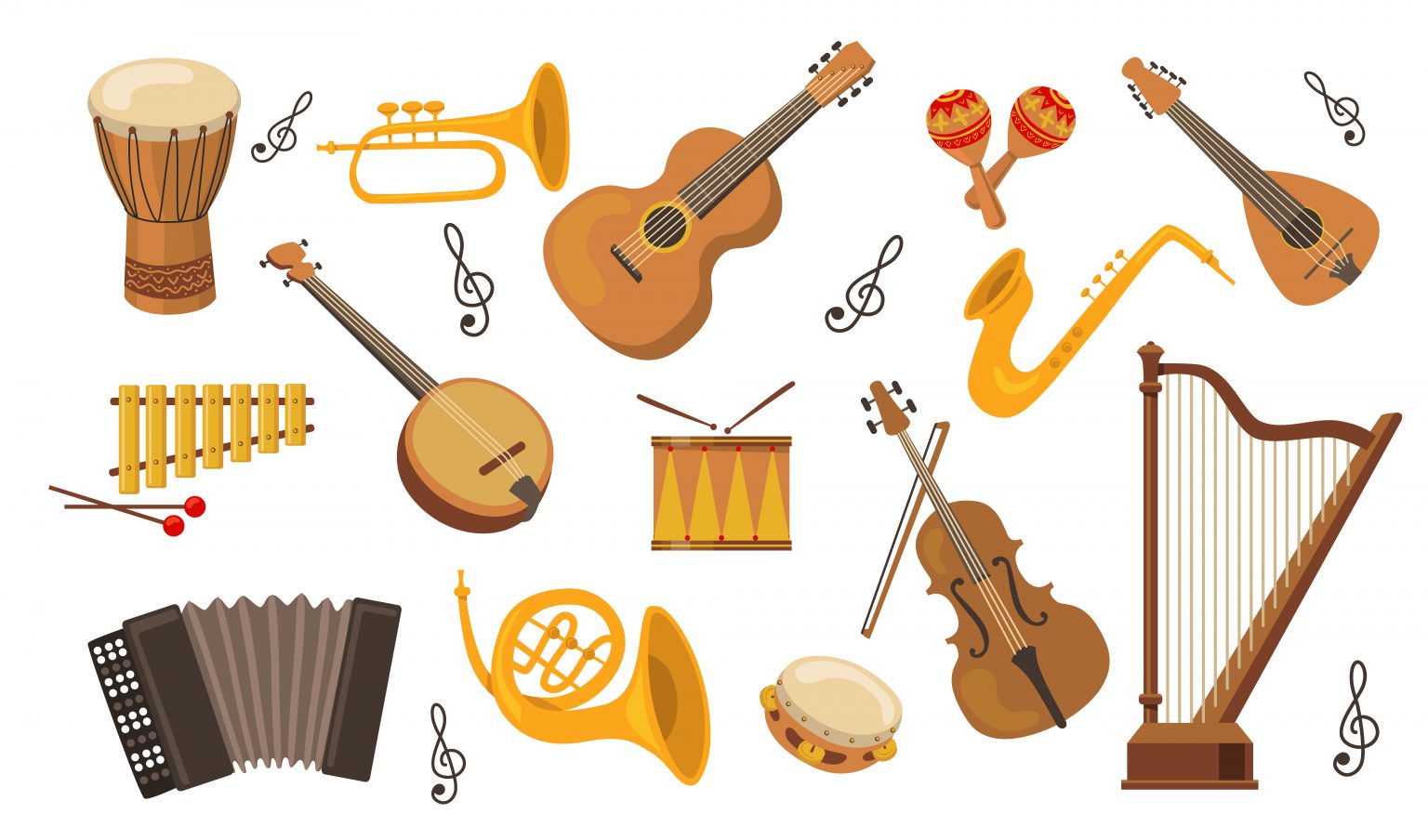You might be thinking, why should a Carnatic music singer aspire to gain knowledge of its instruments? Well, the answer is to obtain better focus and clarity while singing. It provides you with an upper hand on the “Swarasthanas” and “gamakas.”
We have tried to bring out all the interesting facts here about widely used instruments in Carnatic music.
Let’s go through the category wise to understand it better.
Percussion Instruments: These are the types of instruments played via beating by hands, a beater stick,or against each other. It is the oldest form of musical instruments.
- Mridangam: Also known as Pakhawaj, it is an ancient instrument mentioned many times in Hindu mythology. It is usually made up of jackfruit wood. It’s a kind of double-sided drum played by beating both sides with hands rhythmically.
- Thavil: It is a prevalent instrument in South Indian ceremonies and religious events. It is shaped like a barrel and has two faces, like Mridangam. However, in Thavli, the more massive face is higher in pitch in comparison to lower.
- Ghatam: It is based on the “Matka” or “Ghada” (pots to keep water in India, usually made of clay). It’s a circular pot with a narrow opening on the top from where it produces sound. It is made up of a special kind of clay mixed with some brass.
- Morsing: It consists of a metal ring in the shape of a horseshoe with two parallel forks which form the frame. It has a metal tongue in the middle. It is played while clinching the metal tonguein front teeth.
String Instrument: They are the kind of instruments played by pulling strings attached to it in rhythm. The musician’s hands, stick, or a bow can be used to pluck the strings to create the sound.
- Veena: It goes back to Hindu mythology. Sarasvati, the Goddess of education and art, is always depicted carrying Veena in her hands. It’s a harmonious instrument played like Sitar.
- Violin: It comprises of a hollow wooden body with generally four strings attached to it. A bow is used to play the strings. Its rise to fame is to be credited to western classical music. Soon it became indispensable in Carnatic music.
Drone Instrument: Their uniquesound effect lasts after seconds of actually striking the note. It is usually the first and the last sound of any performance.
- Tambura: it is popularly known as Tanpura.It creates harmony in performance, unlike other instruments creating melody and rhythm. It also sustains the “Sur” of the composition by creating the drone effect.
Wind Instrument: It consists of a hollow body created with either brass or wood. Some columns are kept open. The player blows air into the mouthpiece, which makes the sound using the open columns.
- Flute: It is deeply rooted in Hindu Mythology. The Flute was the favorite instrument of Lord Krishna. Itsmelodic sound helped him to attract “Gopikas” (local cowherding girls). It is popularly called “Bansuri” in India. It is mentioned in all 4 Vedas of the Hindu religion. It is mainly created through Bamboo. Custom made Flute for Carnatic Music are known as Carnatic Flutes.They are side-blown by the players.
Reed Instrument: In these instruments, the sound is produced by vibrating a column of air. The columns are specially created for that purpose.
- Harmonium: It’s a keyboard instrument. Sound from Harmonium comes by vibrating a thin metal in a frame. Hand pumped bellows help create the sound when played according to an individual musical note.
Register now to learn Carnatic Music lessons by the highly experienced Gurus on
Acharyanet.
